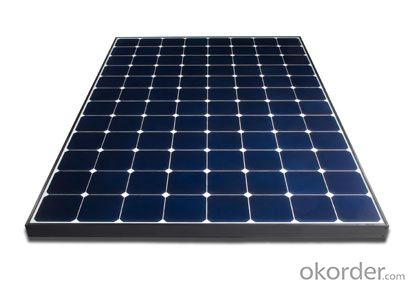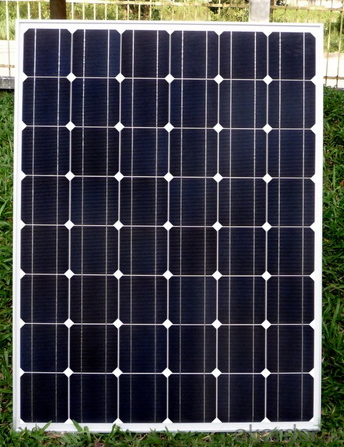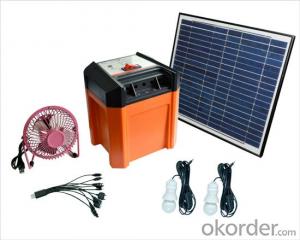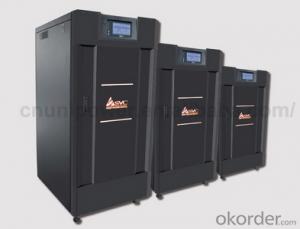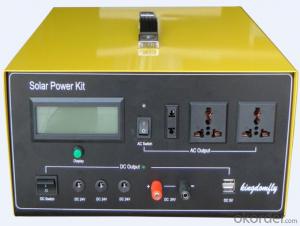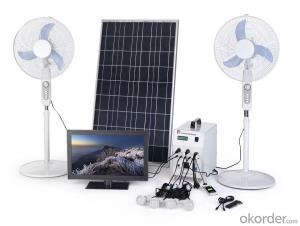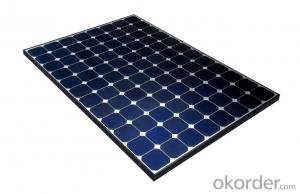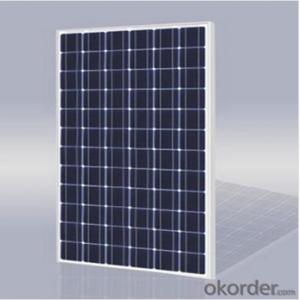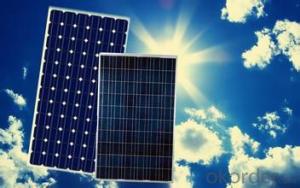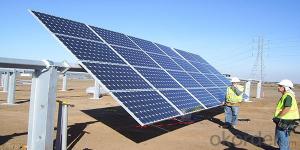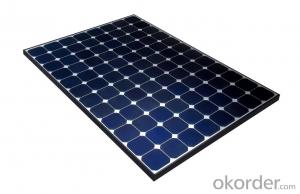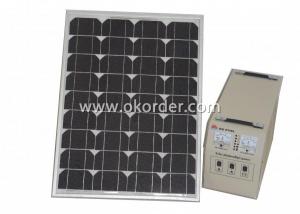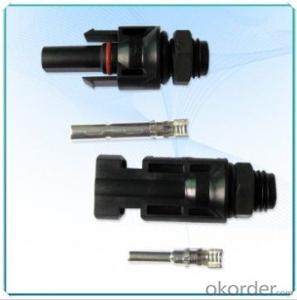120kw CNBM Monocrystalline Silicon Solar Energy Systems Alston Panel for Home Use
- Loading Port:
- Tianjin
- Payment Terms:
- TT OR LC
- Min Order Qty:
- 50 watt
- Supply Capability:
- 1000 watt/month
OKorder Service Pledge
OKorder Financial Service
You Might Also Like
Specification
120KW CNBM Monocrystalline Silicon Panel for Home Using
Production description
Off-the-grid homes are autonomous; they do not rely on municipal water supply, sewer, natural gas, electrical power grid, or similar utility services. A true off-grid house is able to operate completely independently of all traditional public utility services. The idea has been recently popularized by certain celebrities including Ed Begley, Jr.[1] who stars in Living with Ed[2] television show on the Home & The United Nations Development Programme in its 2000 World Energy Assessment found that the annual potential of solar energy was 1,575–49,387 exajoules (EJ). This is several times larger than the total world energy consumption, which was 559.8 EJ in 2012.
Electrical power can be generated on-site with renewable energy sources such as solar (particularly with photovoltaics), wind, micro hydro, geothermal; with agenerator or Micro combined heat and power with adequate fuel reserves. Such a system is called a stand-alone power system. In addition, it is possible to simply eliminate electric power such as in Old Order Amish and Old Order Mennonite communities.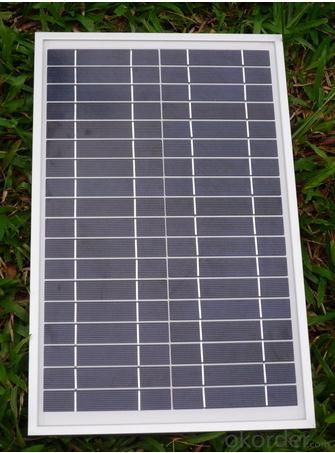
Feature
1.High conversion efficiencies resulting in superior power output performance.
2.Outstanding power output even in low light or high temperature conditions
3.Optimized design for ease of soldering and lamination
Physical characteristic
1. Rigorous quality control meets the highest international standards.
2. High-transmissivity low-iron tempered glass, strong aluminium frame.
3. Using UV-resistant silicon.
4. IS09001/14001/CE/TUV/UL
Packaging
26pcs in one carton 6pallets in 20foot container 14pallets in 40 foot container.
- Q: Can a solar energy system be installed on a thatched roof?
- Yes, a solar energy system can be installed on a thatched roof. However, there are certain considerations that need to be taken into account. Thatched roofs are made of dry vegetation materials, which are highly flammable, so it is important to ensure that the solar panels and their installation do not pose any fire hazards. Additionally, the weight of the solar panels needs to be carefully assessed to ensure that the thatched roof can support the added load. The installation process may require specialized mounting systems and extra precautions to protect the integrity of the thatched roof. Overall, while it is possible to install a solar energy system on a thatched roof, it is important to consult with professionals who have experience in working with thatched roofs to ensure proper safety measures are in place.
- Q: Can a solar energy system be installed on a military base or facility?
- Yes, a solar energy system can be installed on a military base or facility. In fact, many military bases around the world have already embraced solar energy as a reliable and sustainable source of power. These systems can help reduce dependency on fossil fuels, lower operational costs, and enhance energy security for military operations. Additionally, solar installations on military bases contribute to the overall goal of transitioning to clean and renewable energy sources.
- Q: Can solar energy systems be used in powering scientific research vessels or marine laboratories?
- Indeed, it is possible to utilize solar energy systems for the purpose of powering scientific research vessels or marine laboratories. Solar energy, being a renewable and sustainable power source, can be harnessed through the utilization of photovoltaic panels or solar thermal collectors. The energy requirements of research vessels and marine laboratories are substantial, given the nature of their operations which involve scientific experiments, data collection, and analysis. These activities usually involve the use of equipment like computers, sensors, and laboratory instruments, which necessitate a continuous and dependable power supply. To address this need, solar energy systems can be installed on said vessels or laboratories, providing a clean and efficient source of electricity. Through the conversion of sunlight into electricity via photovoltaic panels, the various equipment and systems on board can be powered. Moreover, any excess energy produced by the solar panels can be stored in batteries to be utilized during periods of decreased sunlight or at night. The utilization of solar energy in these marine environments presents numerous advantages. Firstly, it diminishes reliance on fossil fuels and diminishes the carbon footprint associated with conventional methods of power generation. This is particularly vital in the context of scientific research as it aligns with the principles of environmental sustainability and conservation. Secondly, solar energy systems offer a reliable and autonomous power source. Research vessels and marine laboratories often operate in remote or secluded locations where access to traditional power grids may be limited or non-existent. By harnessing solar energy, these vessels and facilities can generate their own electricity, enabling them to continue their research activities without depending on external power sources. Lastly, solar energy systems necessitate minimal maintenance and have a lengthy lifespan. Once installed, they require minimal upkeep and are capable of withstanding the harsh marine environment. This makes them highly suitable for use in research vessels or marine laboratories, where downtime and maintenance issues can be disruptive to ongoing scientific projects. In conclusion, there is no doubt that solar energy systems can be effectively employed to power scientific research vessels or marine laboratories. They offer a sustainable, reliable, and autonomous source of electricity, thereby reducing the carbon footprint and ensuring uninterrupted research activities, even in remote locations.
- Q: Can solar energy systems be used to power homes?
- Yes, solar energy systems can be used to power homes. Solar panels capture sunlight and convert it into electricity, which can then be used to power various appliances and systems within a home. This sustainable and renewable energy source can provide a reliable and cost-effective alternative to traditional utility electricity.
- Q: Can solar energy be used at night?
- No, solar energy cannot be directly used at night as it relies on sunlight to generate electricity. However, energy can be stored during the day using batteries or other storage systems, which can then be used to power devices during nighttime.
- Q: Can solar energy systems be used for powering off-grid medical clinics?
- Yes, solar energy systems can be used for powering off-grid medical clinics. Solar panels can generate electricity from sunlight, which can be stored in batteries for use during non-sunlight hours. This renewable energy source is reliable and sustainable, making it an ideal solution for off-grid locations where access to traditional power grids may be limited or unreliable. Solar energy can power medical equipment, lighting, refrigeration for vaccines and medicines, and other essential devices required in medical clinics. Additionally, solar energy systems can help reduce operating costs and environmental impact, making them an efficient and eco-friendly choice for off-grid medical clinics.
- Q: Do solar energy systems require a lot of wiring?
- Solar energy systems require a certain amount of wiring, but the extent of wiring depends on the size and complexity of the system. In general, solar energy systems do require some wiring to connect the solar panels to the inverter and then to the electrical panel of the building. This wiring is needed to transmit the electricity generated by the solar panels to the appliances and electrical loads in the building. The amount of wiring required will also depend on the location of the solar panels and the distance between the panels and the building's electrical panel. If the panels are installed on the roof, additional wiring may be needed to connect the panels to the inverter, which is typically located inside the building. However, if the solar panels are ground-mounted close to the building, the wiring distance may be shorter, reducing the amount of wiring required. Moreover, the complexity of the system can also impact the amount of wiring needed. For example, if the system includes battery storage or if it is a grid-tied system with net metering, additional wiring may be necessary to connect the batteries or the utility meter. Overall, while solar energy systems do require some wiring, the amount can vary depending on factors such as the system size, location, and complexity. It is always recommended to consult with a professional solar installer who can assess your specific needs and determine the appropriate amount of wiring required for your solar energy system.
- Q: How can I monitor the performance of my solar energy system?
- To effectively monitor the performance of your solar energy system, there are several essential steps you can take: 1. Install a dedicated solar monitoring system: Begin by installing a specialized solar monitoring system that enables real-time tracking of your solar panels' performance. These systems typically comprise hardware devices, such as energy meters or data loggers, that gather data from your solar system and transmit it to a software platform for analysis. 2. Utilize a reliable monitoring software platform: Select a dependable monitoring software platform that seamlessly integrates with your solar monitoring system. This software will provide you with a user-friendly interface to view and analyze your solar system's performance data. It will display crucial metrics like energy production, system efficiency, and any potential issues or faults. 3. Regularly monitor energy production: Keep a vigilant eye on your solar system's energy production. The monitoring software platform will furnish you with real-time data on the energy generated by your solar panels. By consistently tracking this information, you can identify significant changes or fluctuations in energy production, which might indicate potential issues or inefficiencies in your system. 4. Assess system efficiency: Monitoring software platforms often encompass features that enable you to evaluate your solar system's efficiency. Look for metrics such as performance ratio or capacity factor, which offer insights into how effectively your system converts sunlight into usable energy. Monitoring system efficiency over time will aid in detecting any degradation or underperformance in your solar panels. 5. Check for faults or problems: Solar monitoring systems can also issue alerts about faults or issues with your system. These alerts may encompass notifications for low energy production, communication errors, or equipment malfunctions. Regularly reviewing these alerts will assist you in proactively identifying and addressing any problems, minimizing downtime, and maximizing your solar system's performance. 6. Establish automatic reporting: Many monitoring software platforms allow you to configure automatic reports summarizing your system's performance over specific time periods. These reports prove valuable for monitoring long-term trends, comparing performance between different months or years, and identifying patterns or anomalies. Regularly reviewing these reports will provide a comprehensive overview of your solar system's performance. By following these steps and actively monitoring your solar energy system's performance, you can ensure its optimal operation, detect any issues or inefficiencies, and take appropriate actions to maximize energy production and efficiency.
- Q: Can solar energy systems be used in powering airports or transportation hubs?
- Solar energy systems have the capability to power airports and transportation hubs. By installing solar panels, we can harness renewable and sustainable energy from the sun. These panels can be positioned on airport buildings' roofs, parking lots, or the surrounding ground. The utilization of solar energy in airports and transportation hubs is multifaceted. It can generate electricity to power lighting systems, security cameras, and other electrical equipment within the airport premises. Solar power can also be used to charge electric vehicles like electric buses or airport shuttles. This promotes a cleaner transportation system and reduces carbon emissions. In addition, solar energy systems serve as a reliable backup power source during emergencies or power outages. This is particularly crucial for airports, as continuous operations and safety measures must be maintained. Recently, various airports worldwide have adopted solar energy to decrease their carbon footprint and operating expenses. For example, Cochin International Airport in India achieved the distinction of being the world's first completely solar-powered airport in 2015. It generates surplus electricity that can be returned to the grid. Overall, integrating solar energy systems into airports and transportation hubs is both environmentally friendly and economically advantageous in the long term. It diminishes reliance on fossil fuels, reduces energy costs, and contributes to a more sustainable and greener transportation infrastructure.
- Q: How do solar energy systems impact the grid?
- Solar energy systems impact the grid by injecting clean and renewable energy into the system, reducing the overall demand for fossil fuel-based electricity. This helps to decrease greenhouse gas emissions and promote a more sustainable and environmentally friendly energy sector. However, solar energy systems also present challenges for grid operators due to their intermittent nature, as they only produce electricity when the sun is shining. Grid integration and management strategies are required to balance the variations in solar energy generation and ensure grid stability and reliability.
Send your message to us
120kw CNBM Monocrystalline Silicon Solar Energy Systems Alston Panel for Home Use
- Loading Port:
- Tianjin
- Payment Terms:
- TT OR LC
- Min Order Qty:
- 50 watt
- Supply Capability:
- 1000 watt/month
OKorder Service Pledge
OKorder Financial Service
Similar products
Hot products
Hot Searches
Related keywords


